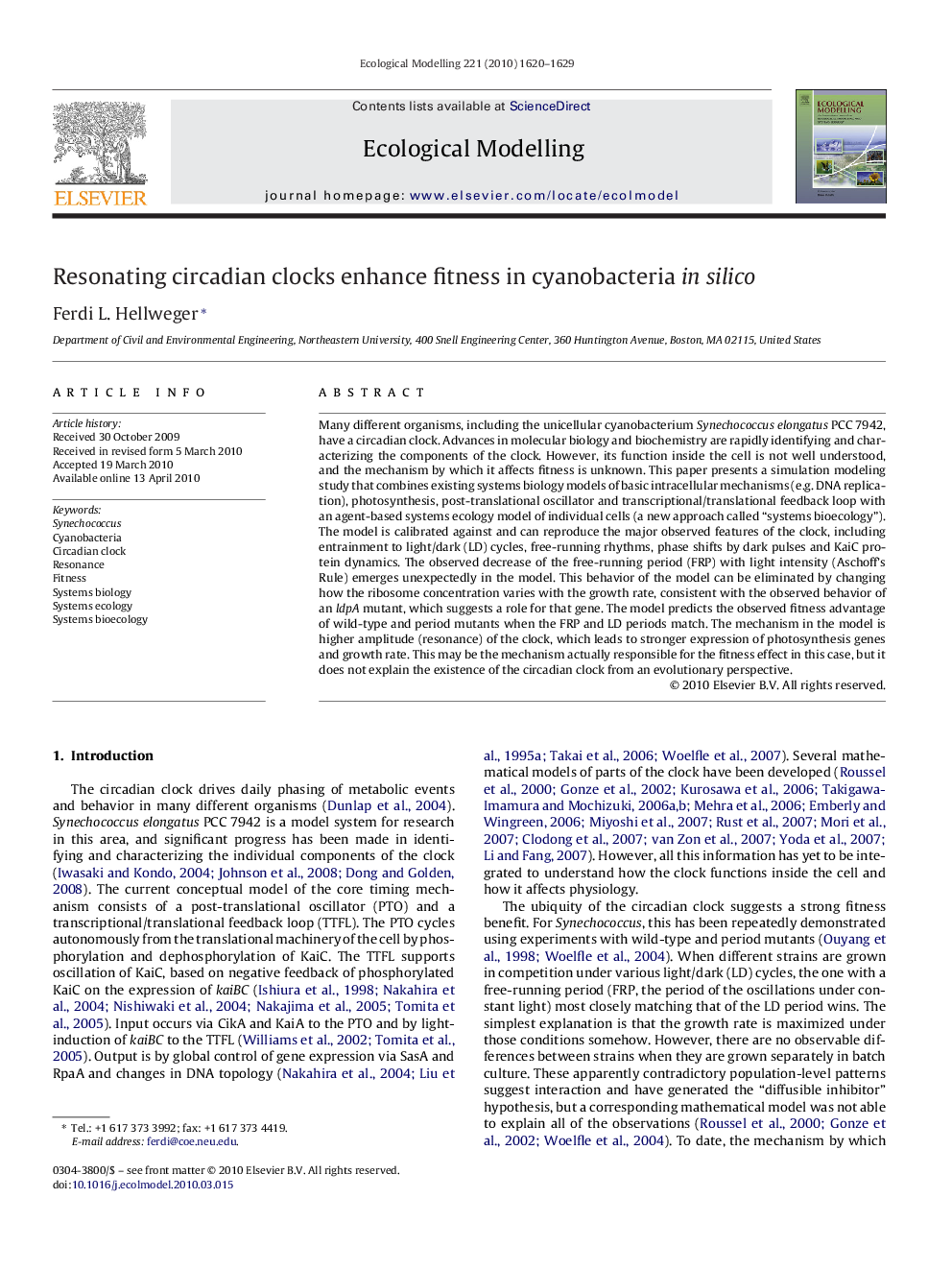| کد مقاله | کد نشریه | سال انتشار | مقاله انگلیسی | نسخه تمام متن |
|---|---|---|---|---|
| 4377259 | 1303417 | 2010 | 10 صفحه PDF | دانلود رایگان |

Many different organisms, including the unicellular cyanobacterium Synechococcus elongatus PCC 7942, have a circadian clock. Advances in molecular biology and biochemistry are rapidly identifying and characterizing the components of the clock. However, its function inside the cell is not well understood, and the mechanism by which it affects fitness is unknown. This paper presents a simulation modeling study that combines existing systems biology models of basic intracellular mechanisms (e.g. DNA replication), photosynthesis, post-translational oscillator and transcriptional/translational feedback loop with an agent-based systems ecology model of individual cells (a new approach called “systems bioecology”). The model is calibrated against and can reproduce the major observed features of the clock, including entrainment to light/dark (LD) cycles, free-running rhythms, phase shifts by dark pulses and KaiC protein dynamics. The observed decrease of the free-running period (FRP) with light intensity (Aschoff's Rule) emerges unexpectedly in the model. This behavior of the model can be eliminated by changing how the ribosome concentration varies with the growth rate, consistent with the observed behavior of an ldpA mutant, which suggests a role for that gene. The model predicts the observed fitness advantage of wild-type and period mutants when the FRP and LD periods match. The mechanism in the model is higher amplitude (resonance) of the clock, which leads to stronger expression of photosynthesis genes and growth rate. This may be the mechanism actually responsible for the fitness effect in this case, but it does not explain the existence of the circadian clock from an evolutionary perspective.
Journal: Ecological Modelling - Volume 221, Issue 12, 24 June 2010, Pages 1620–1629